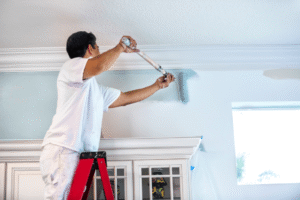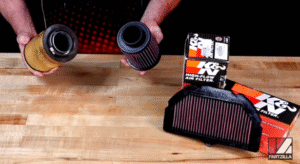
Mobility equipment plays a pivotal role in enhancing the daily living experience of individuals with mobility challenges, offering essential support and facilitating independence in various aspects of life. From wheelchairs and walkers to mobility scooters and adaptive tools, aids for daily living are designed to address specific mobility needs and improve overall quality of life.
This article explores the diverse ways in which mobility equipment can significantly enhance the daily living experience, emphasizing their role as essential tools for promoting mobility, comfort, and independence.
Ways Mobility Equipment Can Improve Your Daily Living Experience
1. Enhanced Mobility and Accessibility
Mobility equipment, such as wheelchairs and mobility scooters, provides essential support for individuals with mobility impairments, enabling them to navigate their surroundings with greater ease and accessibility. These aids facilitate movement both indoors and outdoors, overcoming barriers and enhancing independence in daily activities.
For instance, powered wheelchairs equipped with maneuverability features and adjustable seating allow users to move comfortably through tight spaces and navigate obstacles effortlessly. Similarly, mobility scooters offer enhanced mobility over longer distances, providing individuals with the freedom to travel independently and participate in community events.
2. Support for Activities of Daily Living
Aids for daily living encompass a range of devices designed to support various activities essential for daily life. Walkers and canes, for example, offer stability and balance assistance, enabling individuals to walk safely and perform routine tasks such as cooking, cleaning, or shopping.
Additionally, adaptive tools such as reachers, grab bars, and dressing aids assist individuals with limited mobility in completing daily tasks independently. These tools promote self-reliance and reduce dependence on caregivers, enhancing personal dignity and autonomy in managing daily routines.
3. Improved Safety and Fall Prevention
Safety is a primary concern for individuals with mobility challenges, particularly older adults who may be at higher risk of falls and injuries. Mobility equipment plays a crucial role in improving safety and fall prevention by providing stability, support, and secure maneuverability.
Devices such as shower chairs raised toilet seats and bed rails enhance bathroom safety and accessibility, reducing the risk of slips and falls in potentially hazardous environments. Similarly, mobility aids with anti-tip mechanisms, ergonomic grips, and sturdy frames offer reassurance and confidence during daily activities, minimizing the likelihood of accidents and promoting overall well-being.
4. Enhanced Comfort and Ergonomics
Comfort is essential for ensuring the effectiveness and usability of mobility equipment. Aids for daily living are designed with ergonomic features such as padded seats, adjustable handles, and supportive cushions to enhance user comfort during prolonged use.
For example, wheelchairs with customizable seating options and reclining capabilities provide optimal support and pressure relief for individuals with mobility impairments. Adjustable walkers and canes allow users to maintain proper posture and reduce strain on joints and muscles, promoting comfort and reducing fatigue during daily activities.
5. Promoting Independence and Social Engagement
Mobility equipment plays a vital role in promoting independence and facilitating active participation in social and community activities. By enabling individuals to move freely and independently, these aids empower users to maintain social connections, pursue hobbies, and engage in recreational pursuits.
Powered mobility aids, in particular, offer greater freedom of movement and accessibility, allowing users to attend events, visit friends and family, and explore outdoor environments with confidence. The ability to participate in daily life activities promotes emotional well-being, self-esteem, and a sense of belonging within the community.
Conclusion
In conclusion, mobility equipment serves as an indispensable aid for daily living, significantly improving the quality of life for individuals with mobility challenges. From enhancing mobility and accessibility to supporting daily activities, improving safety, and promoting independence, these aids play a crucial role in facilitating a more comfortable, active, and fulfilling lifestyle.
By incorporating ergonomic designs, safety features, and personalized support options, aids for daily living cater to diverse mobility needs and preferences. They empower individuals to maintain autonomy, dignity, and social engagement, fostering a sense of empowerment and well-being.
As advancements in technology and design continue to evolve, the future holds promise for further innovations in mobility equipment, enhancing effectiveness, accessibility, and user satisfaction. By prioritizing the selection and use of appropriate mobility aids, individuals can maximize their daily living experience and enjoy greater independence in managing their mobility challenges effectively.
Mobility equipment plays a pivotal role in enhancing the daily living experience of individuals with mobility challenges, offering essential support and facilitating independence in various aspects of life. From wheelchairs and walkers to mobility scooters and adaptive tools, aids for daily living are designed to address specific mobility needs and improve overall quality of life.
As advancements in technology and design continue to evolve, the future holds promise for further innovations in mobility equipment, enhancing effectiveness, accessibility, and user satisfaction. By prioritizing the selection and use of appropriate mobility aids, individuals can maximize their daily living experience and enjoy greater independence in managing their mobility challenges effectively
Read also:https://deepcyclenews.co.uk/







